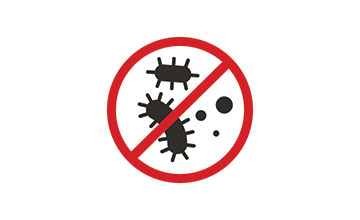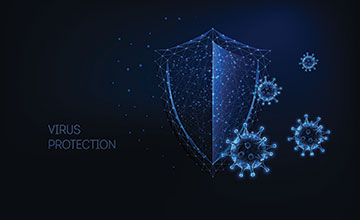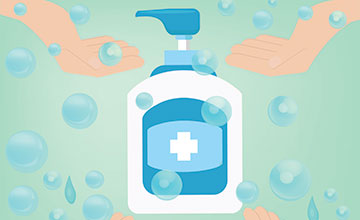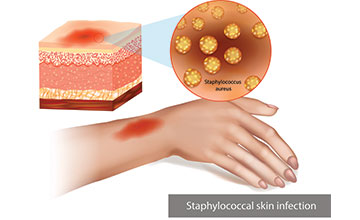Anti-Bacterial Technology
In today's world, safeguarding against harmful bacteria has become a crucial priority across various industries. From healthcare to consumer products, the need to maintain clean, germ-free environments has led to the development of numerous anti-bacterial solutions. These solutions often focus on killing bacteria and providing effective germ protection through innovative technologies.
The Threat of Harmful Bacteria
Bacteria are microorganisms that can thrive in numerous environments, some of which pose serious health risks. Harmful bacteria, such as E. coli, Staphylococcus aureus, and Salmonella, can cause illnesses ranging from minor skin infections to severe, life-threatening conditions. These bacteria can spread easily in public spaces, healthcare environments, and even homes, making it critical to control their growth and prevent contamination.
Bacterial infections can result from direct contact with contaminated surfaces, airborne transmission, or through food and water. The growing awareness of these risks has accelerated the demand for products that provide continuous germ protection. Whether its healthcare facilities striving to reduce hospital-acquired infections or individuals looking to maintain personal hygiene, the focus on eliminating harmful bacteria is a top priority.


Anti-Germ Solutions for Everyday Protection
In response to the rising concern over harmful bacteria, many consumer products are now designed with anti-germ technologies that prevent bacterial growth. From household cleaners to personal care items like soaps and sanitizers, these products provide an additional layer of defence against germs.
Anti-germ solutions are formulated to neutralize bacteria on surfaces or skin, ensuring that germs are eliminated before they can cause harm. These products offer convenience and peace of mind, particularly in high-traffic environments where bacteria are likely to spread. With growing consumer demand for effective hygiene products, anti-germ solutions continue to evolve, offering longer-lasting protection and improved efficacy in killing bacteria.
Germicidal Agents
Germicidal agents are substances designed to destroy or inhibit the growth of harmful bacteria. These agents are commonly found in cleaning products, disinfectants, and coatings. Germicides work by targeting the cell structures of bacteria, disrupting their biological functions, and ultimately leading to their death. The versatility of germicidal agents means they can be applied in a variety of environments, including hospitals, schools, and public transportation systems.
In healthcare settings, germicidal agents are crucial in preventing the spread of infections. They are used in hand sanitizers, surface disinfectants, and medical equipment to reduce bacterial contamination. Beyond healthcare, industries such as food processing and hospitality also rely on germicidal products to ensure hygiene standards are met, making environments safer for consumers and employees.


GermShield Technology
GermShield is a cutting-edge technology designed to offer continuous protection against harmful bacteria. By integrating antimicrobial agents into various products, GermShield ensures that bacteria cannot survive on treated surfaces. This technology is widely used in industries that prioritize hygiene, such as healthcare, hospitality, and consumer goods.
GermShield works by releasing antimicrobial agents that attack bacterial cells on contact. This creates an environment where bacteria cannot thrive, thereby reducing the risk of infection and contamination. The technology is used in everything from hospital surfaces and medical equipment to everyday products like household cleaners and personal care items.
One of the major benefits of GermShield is its long-lasting effect. Unlike conventional cleaning products that require frequent reapplication, GermShield continues to provide protection for extended periods, making it an ideal solution for high-touch surfaces in public spaces. This ensures that surfaces remain germ-free for longer durations, reducing the spread of harmful bacteria.
GermGuard: Enhancing Safety in High-Risk Areas
Similar to GermShield, GermGuard is an antimicrobial technology that offers robust defense against bacterial contamination. GermGuard is particularly effective in environments that experience high bacterial load, such as hospitals, schools, and public transportation systems. By incorporating antimicrobial agents into surface coatings and materials, GermGuard creates a protective barrier that continuously eliminates bacteria.
GermGuard's effectiveness stems from its ability to disrupt bacterial growth at the cellular level. The technology ensures that treated surfaces remain free from harmful bacteria, even after repeated contact. This makes GermGuard a valuable tool in settings where maintaining hygiene is essential for public safety.
Creating Germ-Free Environments
Achieving a germfree environment is a goal shared by industries across the globe. Whether in healthcare, education, or the hospitality industry, the need to create spaces where bacteria cannot flourish is paramount. A germfree environment minimizes the risk of bacterial transmission, thereby reducing the occurrence of bacterial infections and promoting overall health and well-being.
The use of germicidal agents, antimicrobial coatings, and germ-resistant surfaces is key to maintaining a germfree environment. Additionally, personal hygiene products like antibacterial hand soaps, sanitizers, and wipes play a crucial role in eliminating bacteria from hands and skin. Together, these technologies and products contribute to creating spaces that are safe, clean, and free from harmful bacteria.
Advanced anti-bacterial technologies like GermShield, GermGuard, and Germicidal Agents are transforming the way industries and individuals approach hygiene and bacterial control. These solutions offer effective, long-lasting protection against harmful bacteria, ensuring that surfaces, products, and personal care items remain germfree.
As the need for reliable germ protection continues to rise, innovations in anti-germ technologies will play an essential role in safeguarding public health and maintaining cleaner, safer environments.

